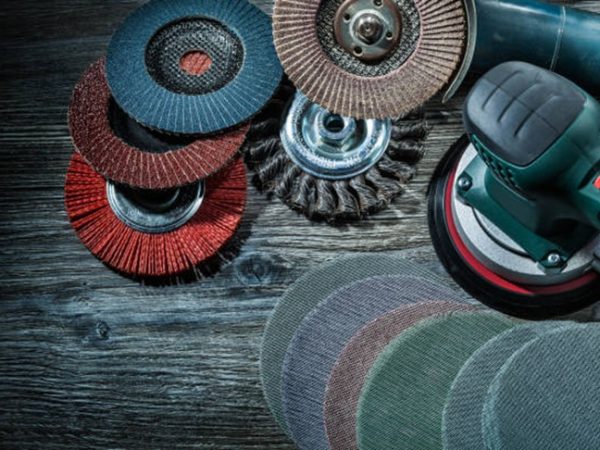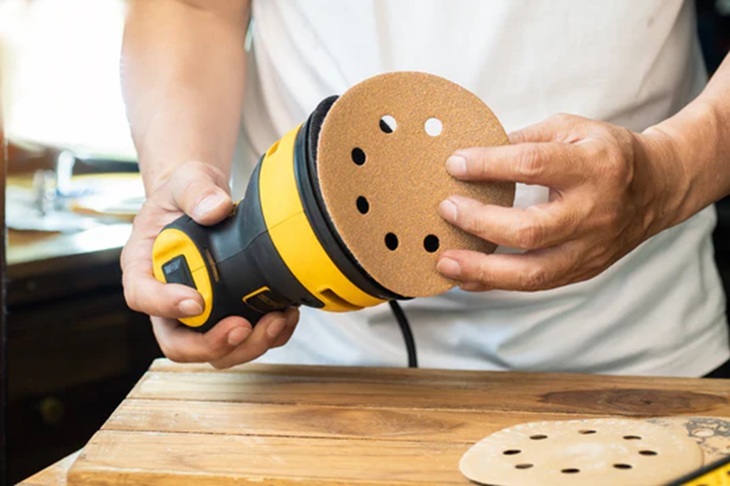09
Oct

Improving efficiency in a warehouse often comes down to having the right tools on hand. In welding workshops, this is no different. A reliable angle grinder, whether cordless or corded, gives welders the flexibility to cut, grind, sand and finish metal parts with greater speed and precision. The performance of the tool, however, largely comes from the accessories being used with it. From smoothing rough edges to preparing surfaces for welding, choosing the right attachments saves you both time and effort while enabling you to improve your final skills.

Sanding discs are extremely useful for welders who need to create smooth finishes on metal surfaces. By removing burrs, rust and other imperfections, they help prepare surfaces for what follows. A good sanding disc for a grinder adds consistency to the finish and helps reduce preparation time. Many welders turn to metal sanding disc options as they offer quick material removal without affecting your control over the tool.
With steady use, abrasive sanding wheels in disc form handle different levels of roughness and can be chosen according to the grit level needed. Coarse sanding discs are effective in stripping heavy coatings or cleaning tough material, while finer grit discs deliver smoother finishes ideal for painting or sealing. Aside from smoothing, sanding discs also play an important role in shaping small metal pieces.
By applying the right pressure, welders can adjust contours and avoid jagged edges. This ensures that parts fit together better before any welding takes place. Another key area where sanding discs shine is in weld blending. Freshly welded joints often have uneven surfaces or visible marks where the weld bead sits. Running a sanding disc across these areas makes the surface cleaner and more uniform, which improves overall durability once the job is complete.
There are several types of sanding discs that welders can choose from. Fibre sanding discs are one of the common choices since they attach directly to a backing pad and deliver strong performance for metal grinding. They work well with abrasive sanding wheels and are reliable for both general cleaning and finishing tasks.
Flap discs are another popular selection. With overlapping flaps of material, they offer a mix of grinding and finishing in one. This makes them practical for welders who want to save time changing from a heavy grinding disc to a finer finishing tool. Other types include hook and loop sanding discs, which allow for quick attachment and removal. These come in a wide range of grit sizes, allowing welders to cover everything from coarse stripping to fine polishing.
A metal sanding disc with ceramic or zirconia grit is excellent for tougher materials, lasting longer in heavy-duty grinding sessions. Each type serves a specific need, so proper selection makes the angle grinder more versatile. Understanding which sanding disc for a grinder will best match the job at hand is essential for efficiency and quality results.
Grinding discs are a staple for welders who need reliable performance in removing excess material. They are used to grind down weld beads, smooth sharp edges and level uneven joints. These discs offer more aggression than sanding accessories, which makes them ideal for heavy work like removing slag or shaping metal.
The common types are standard grinding discs and specialised discs such as aluminium oxide or zirconia options. Aluminium oxide works well for mild steel, while zirconia discs are valued for tougher jobs since they last longer and manage high pressure effectively. Choosing the right disc helps welders finish heavy-duty tasks without excess wear on the grinder.
Cutting discs provide precision when dividing sheet metal, rods or pipes. They are designed for straight, clean cuts that save time compared to manual methods. These thin discs allow users to cut through various thicknesses without overloading the grinder.
The common cutting discs include standard steel cutting wheels and reinforced discs. Welders usually prefer reinforced options for extra durability. Thin discs reduce friction and heat build-up, making them suitable for minimising material distortion when accuracy is important.
Polishing pads are utilised for finishing work after grinding or sanding. They help restore shine and can prepare metal for coatings or paint. Welders use them to improve surface appearance once all heavy work is complete.
Foam and wool pads are the most used types. Foam pads provide smooth results and are effective with polishing compounds, while wool pads offer more aggressive polishing for quick material removal. Choosing between them depends on whether the goal is fine finishing or stronger surface treatment.
Wire brushes are perfect for cleaning surfaces prior to welding. They strip rust, paint and scale without cutting deep into the base metal. This helps ensure that the welded joint develops with proper bonding and fewer defects.
Wire wheels, cup brushes and bevel brushes are the common styles. Wire wheels reach flat surfaces and edges, while cup brushes handle larger areas. Bevel brushes are used at angles, making them effective for corners and tricky spots. Each type provides a targeted method of cleaning metal before welding begins.